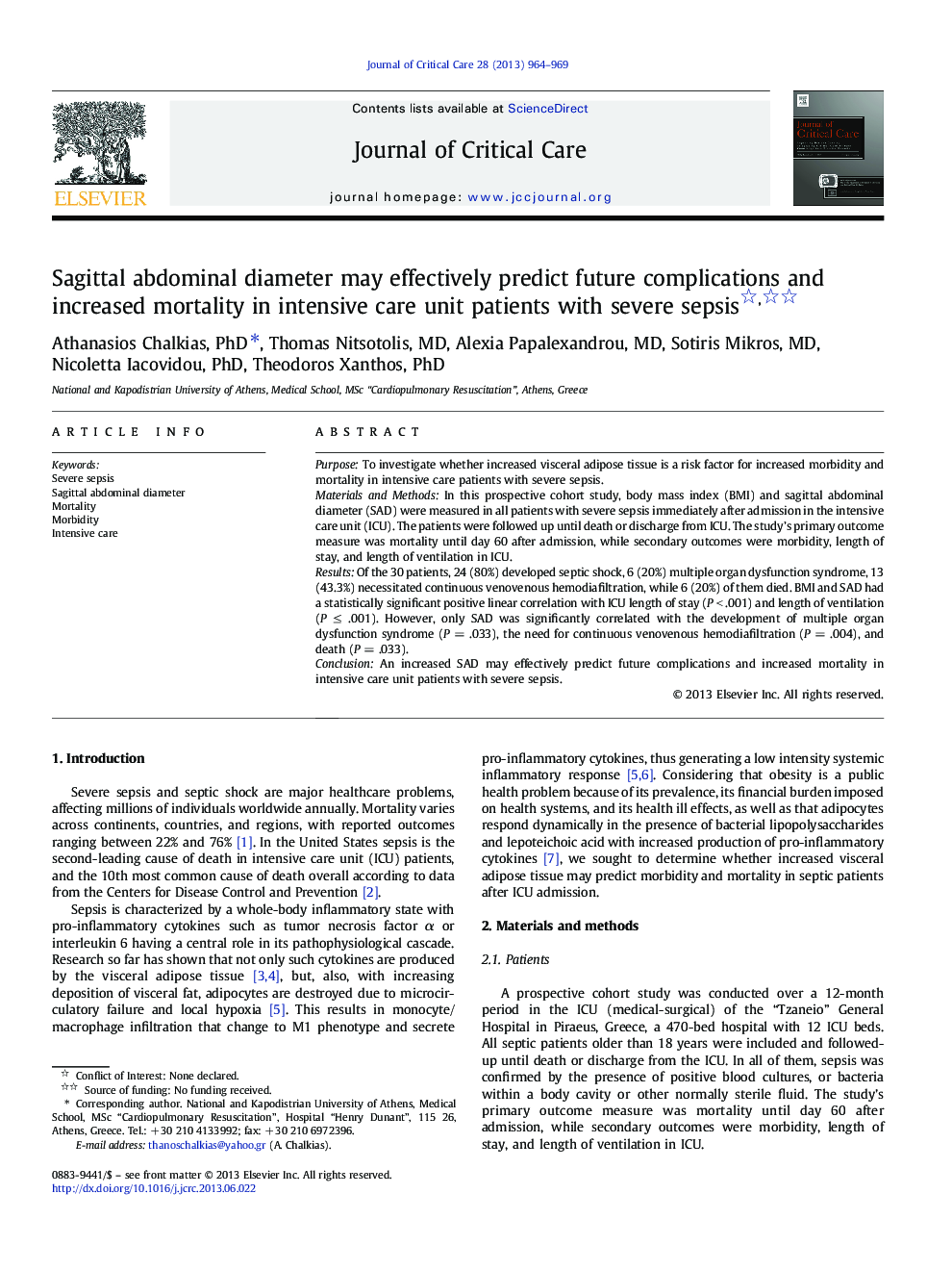| Article ID | Journal | Published Year | Pages | File Type |
|---|---|---|---|---|
| 5887040 | Journal of Critical Care | 2013 | 6 Pages |
PurposeTo investigate whether increased visceral adipose tissue is a risk factor for increased morbidity and mortality in intensive care patients with severe sepsis.Materials and MethodsIn this prospective cohort study, body mass index (BMI) and sagittal abdominal diameter (SAD) were measured in all patients with severe sepsis immediately after admission in the intensive care unit (ICU). The patients were followed up until death or discharge from ICU. The study's primary outcome measure was mortality until day 60 after admission, while secondary outcomes were morbidity, length of stay, and length of ventilation in ICU.ResultsOf the 30 patients, 24 (80%) developed septic shock, 6 (20%) multiple organ dysfunction syndrome, 13 (43.3%) necessitated continuous venovenous hemodiafiltration, while 6 (20%) of them died. BMI and SAD had a statistically significant positive linear correlation with ICU length of stay (P < .001) and length of ventilation (P ⤠.001). However, only SAD was significantly correlated with the development of multiple organ dysfunction syndrome (P = .033), the need for continuous venovenous hemodiafiltration (P = .004), and death (P = .033).ConclusionAn increased SAD may effectively predict future complications and increased mortality in intensive care unit patients with severe sepsis.
